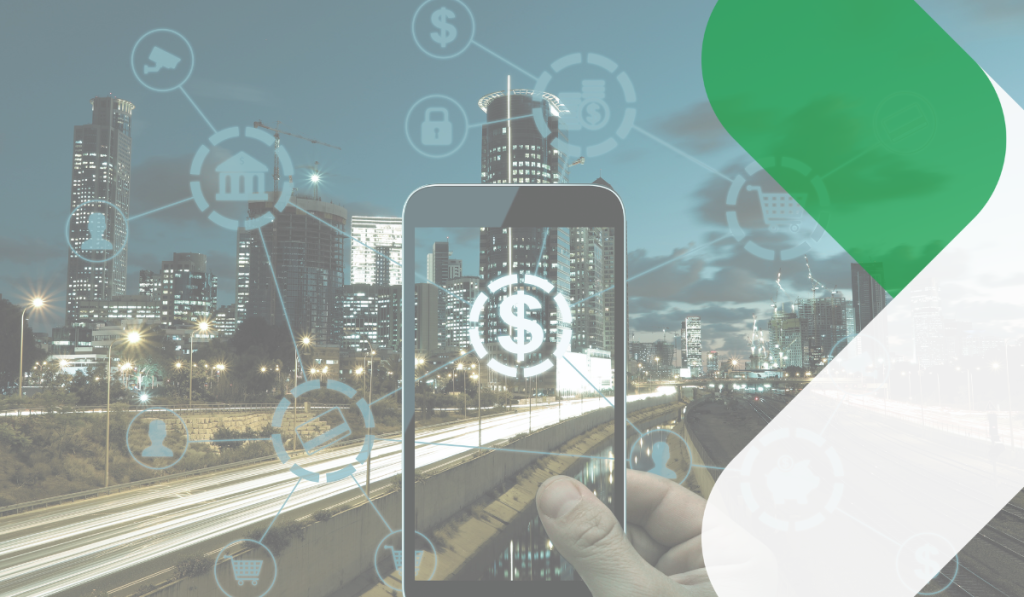
Unleashing the Power of Data: The API Economy and Open Banking
Exploring the immense potential of data-driven innovation within the financial services industry.
Digitized financial services help raise expectations by delivering enhanced customer experiences. They also help improve the revenue and cost dynamics of existing products and services.
This article will explore seven effective ways to ensure future readiness of finance and banking processes.
Digitization has already significantly impacted the design of services and business models. For example, if you pay attention to FinTech startups, you quickly see how they are gaining greater market share at an accelerated pace, leaving traditional financial services far behind.
As Gen Zers will drive the future of banking, it’s surprising to find that only a few financial services have fully embraced digitization. Although most banks provide banking and financial services online and on mobile devices, several service functions aren’t properly organized and are limited to customer-specific applications.
For example, you can pick up your phone and apply for a loan within the bank’s mobile app. However, to complete the application and receive the loan, they have to go to the local bank branch and physically complete additional “paperwork.”
These types of scenarios are annoying, to say the least, for today’s tech-savvy customer. The good news is that banks are trying to improve service delivery and shorten service cycles.
Going forward, the key to ensuring future readiness of banking processes will come down to changing their focus to customer-centric experiences.
Who are your customers? You know about their finances; what about their individual preferences? For example, someone looking to start a small business won’t be interested in discussing different retirement plans. So, you have to know your customer well.
Unfortunately, many banks and financial service providers still believe that their internal processes come first. But this is a massive mistake as customers are driven by their own desires and needs. They won’t value your services built on legacy processes.
The “customer journey” comprises all the different phases of the customer decision process. For example, a customer-centric application will capture each part of the process, systems, and channels as customers explore banking and investment options.
Individual customer journeys demand a clear structure and organization to complete a specific task. In this case, the entire decision train must be well-organized, consistent, efficient, and highly personalized (from start to finish).
In everyday banking, the procedures related to opening an account or concluding a loan agreement involve several departments, processes, partners, and suppliers. The key here is providing a service where the customer perceives all the stages as a single, intuitive, and established process.
High-quality customer journeys have a positive impact on customer satisfaction and loyalty. Happy customers are also more likely to promote the brand, financial products, and services to their peers.
As a result, traditional banks and financial service providers must go back to the drawing board and rethink each touchpoint, interaction, and the processes behind them. This approach will help shed light on different bottlenecks, opportunities to differentiate and provide new services, and build loyalty.
If the financial institution has been around for years, chances are they are working with fragmented legacy applications and infrastructure. Before even considering developing new products and solutions, banks must start by updating their present technology infrastructure.
For example, a leading banking and FinTech provider reached out to rinf.tech to update their legacy systems. They had the following challenges as a result of using legacy software:
When they updated their legacy infrastructure with our help, the company
When it comes to smart solutions, we have a ton of choices. By leveraging robust cognitive tools, banks can now process oceans of data and perform complex analyses in near real-time. This approach helps optimize highly personalized customer journeys.
Smart tools also improve the quality of customer interactions and staff engagement across departments. Many artificial intelligence (AI) and machine learning (ML) tools are built to perform predefined tasks leveraging advanced scoring and decision-making technologies.
As these tools are highly adaptive and constantly learn from each engagement, they will get better at making more accurate decisions and conclusions.
ML also helps the investment division make better decisions based on predictive analytics. Investment bankers can adjust portfolios based on algorithms that consider economic, political, and other related factors. Best of all, analysts can build highly detailed data models within minutes to make business-critical decisions.
Digitization in highly regulated industries like banking isn’t straightforward. Banks can’t really do anything until all stakeholders, including senior management, are onboard.
Completely transforming the entire customer journey and how things work internally demands close collaboration between business units and technology. More often than not, banks have to hire new talent, reskill current employees, and set up new key performance metrics. The latter will differ quite significantly from traditional banking KPIs.
For banks, technology and hardware is consistently the primary source of energy consumption. So, it’s best to start banking digitization projects focusing on green development.
Research suggests that the banking sector consumes as much as 263.72 terawatt-hours per year. Out of that number, banking data centers use a whopping 238.92 terawatt-hours per year. By 2025, the amount of electricity consumed by banks will be equal to the world’s 10th largest economy in 2021.
As data center hardware has a lifespan of about five years, e-waste disposal is also a massive challenge for the industry. So, it makes sense to start thinking about “green” solutions right from the first discussion.
Whenever systems and applications are connected, exposure to risk expands enormously. It’s important to consider data security threats, distributed denial of services (DDoS) attacks, algorithm vulnerabilities, zero-day attacks, and much more.
It may help to learn from decentralized finance (DeFi) startups and how they manage security. By building security into the foundation of new digital banking products, banks can go a long way to mitigate risk and ensure compliance.
Being future-ready depends on what you do today. As such, banks must make decisions based on short-term and long-term goals. They must also work towards changing their working culture to adopt new technologies and processes.

Exploring the immense potential of data-driven innovation within the financial services industry.

A comprehensive overview of how fintech innovations drive significant changes in the retail industry.

Examining AI’s diverse effects on finance, delving into its advantages and obstacles, aiming to understand its transformative influence and future impact on the sector.
Copyright © 2023 rinf.tech. All Rights Reserved.
Terms & Conditions. Cookie Policy. Privacy Policy.
Politica Avertizari de Integritate (RO)